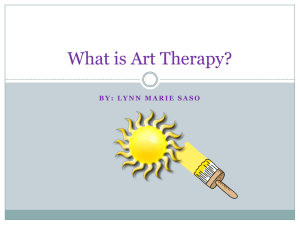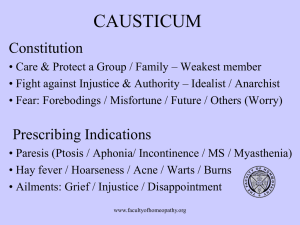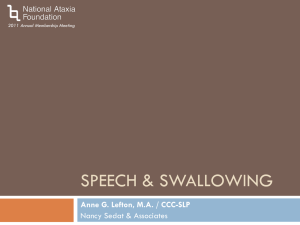Living with OPMD: A Phenomenological Study
advertisement
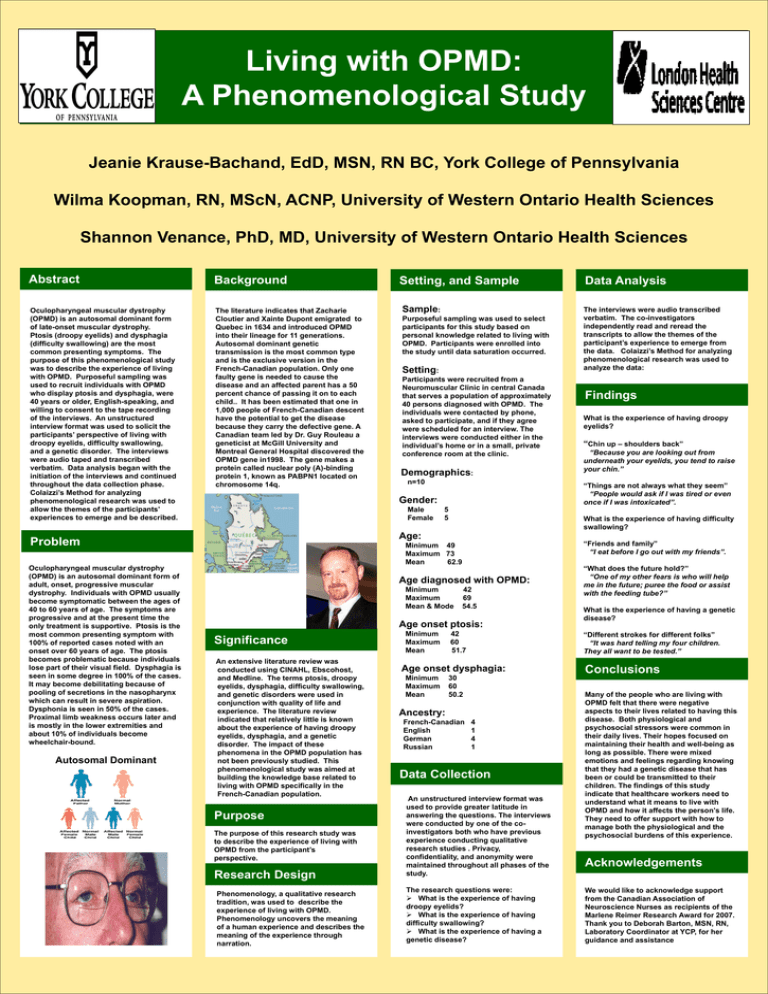
Living with OPMD: A Phenomenological Study Jeanie Krause-Bachand, EdD, MSN, RN BC, York College of Pennsylvania Wilma Koopman, RN, MScN, ACNP, University of Western Ontario Health Sciences Shannon Venance, PhD, MD, University of Western Ontario Health Sciences Abstract Background Oculopharyngeal muscular dystrophy (OPMD) is an autosomal dominant form of late-onset muscular dystrophy. Ptosis (droopy eyelids) and dysphagia (difficulty swallowing) are the most common presenting symptoms. The purpose of this phenomenological study was to describe the experience of living with OPMD. Purposeful sampling was used to recruit individuals with OPMD who display ptosis and dysphagia, were 40 years or older, English-speaking, and willing to consent to the tape recording of the interviews. An unstructured interview format was used to solicit the participants’ perspective of living with droopy eyelids, difficulty swallowing, and a genetic disorder. The interviews were audio taped and transcribed verbatim. Data analysis began with the initiation of the interviews and continued throughout the data collection phase. Colaizzi’s Method for analyzing phenomenological research was used to allow the themes of the participants’ experiences to emerge and be described. The literature indicates that Zacharie Cloutier and Xainte Dupont emigrated to Quebec in 1634 and introduced OPMD into their lineage for 11 generations. Autosomal dominant genetic transmission is the most common type and is the exclusive version in the French-Canadian population. Only one faulty gene is needed to cause the disease and an affected parent has a 50 percent chance of passing it on to each child.. It has been estimated that one in 1,000 people of French-Canadian descent have the potential to get the disease because they carry the defective gene. A Canadian team led by Dr. Guy Rouleau a geneticist at McGill University and Montreal General Hospital discovered the OPMD gene in1998. The gene makes a protein called nuclear poly (A)-binding protein 1, known as PABPN1 located on chromosome 14q. Autosomal Dominant Sample: Purposeful sampling was used to select participants for this study based on personal knowledge related to living with OPMD. Participants were enrolled into the study until data saturation occurred. Setting: Participants were recruited from a Neuromuscular Clinic in central Canada that serves a population of approximately 40 persons diagnosed with OPMD. The individuals were contacted by phone, asked to participate, and if they agree were scheduled for an interview. The interviews were conducted either in the individual’s home or in a small, private conference room at the clinic. Demographics: n=10 Male Female 5 5 Age diagnosed with OPMD: Minimum Maximum Mean & Mode 42 69 54.5 Age onset ptosis: Purpose The purpose of this research study was to describe the experience of living with OPMD from the participant’s perspective. Research Design Phenomenology, a qualitative research tradition, was used to describe the experience of living with OPMD. Phenomenology uncovers the meaning of a human experience and describes the meaning of the experience through narration. Findings What is the experience of having droopy eyelids? “Chin up – shoulders back” “Because you are looking out from underneath your eyelids, you tend to raise your chin.” “Friends and family” “I eat before I go out with my friends”. Minimum 49 Maximum 73 Mean 62.9 An extensive literature review was conducted using CINAHL, Ebscohost, and Medline. The terms ptosis, droopy eyelids, dysphagia, difficulty swallowing, and genetic disorders were used in conjunction with quality of life and experience. The literature review indicated that relatively little is known about the experience of having droopy eyelids, dysphagia, and a genetic disorder. The impact of these phenomena in the OPMD population has not been previously studied. This phenomenological study was aimed at building the knowledge base related to living with OPMD specifically in the French-Canadian population. The interviews were audio transcribed verbatim. The co-investigators independently read and reread the transcripts to allow the themes of the participant’s experience to emerge from the data. Colaizzi’s Method for analyzing phenomenological research was used to analyze the data: What is the experience of having difficulty swallowing? Age: Significance Data Analysis “Things are not always what they seem” “People would ask if I was tired or even once if I was intoxicated”. Gender: Problem Oculopharyngeal muscular dystrophy (OPMD) is an autosomal dominant form of adult, onset, progressive muscular dystrophy. Individuals with OPMD usually become symptomatic between the ages of 40 to 60 years of age. The symptoms are progressive and at the present time the only treatment is supportive. Ptosis is the most common presenting symptom with 100% of reported cases noted with an onset over 60 years of age. The ptosis becomes problematic because individuals lose part of their visual field. Dysphagia is seen in some degree in 100% of the cases. It may become debilitating because of pooling of secretions in the nasopharynx which can result in severe aspiration. Dysphonia is seen in 50% of the cases. Proximal limb weakness occurs later and is mostly in the lower extremities and about 10% of individuals become wheelchair-bound. Setting, and Sample Minimum Maximum Mean 30 60 50.2 Ancestry: French-Canadian English German Russian What is the experience of having a genetic disease? “Different strokes for different folks” “It was hard telling my four children. They all want to be tested.” 42 60 51.7 Age onset dysphagia: Minimum Maximum Mean “What does the future hold?” “One of my other fears is who will help me in the future; puree the food or assist with the feeding tube?” 4 1 4 1 Data Collection An unstructured interview format was used to provide greater latitude in answering the questions. The interviews were conducted by one of the coinvestigators both who have previous experience conducting qualitative research studies . Privacy, confidentiality, and anonymity were maintained throughout all phases of the study. The research questions were: What is the experience of having droopy eyelids? What is the experience of having difficulty swallowing? What is the experience of having a genetic disease? Conclusions Many of the people who are living with OPMD felt that there were negative aspects to their lives related to having this disease. Both physiological and psychosocial stressors were common in their daily lives. Their hopes focused on maintaining their health and well-being as long as possible. There were mixed emotions and feelings regarding knowing that they had a genetic disease that has been or could be transmitted to their children. The findings of this study indicate that healthcare workers need to understand what it means to live with OPMD and how it affects the person’s life. They need to offer support with how to manage both the physiological and the psychosocial burdens of this experience. Acknowledgements We would like to acknowledge support from the Canadian Association of Neuroscience Nurses as recipients of the Marlene Reimer Research Award for 2007. Thank you to Deborah Barton, MSN, RN, Laboratory Coordinator at YCP, for her guidance and assistance
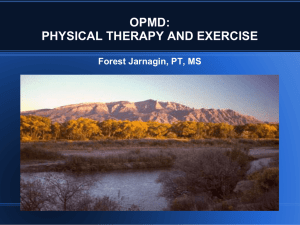
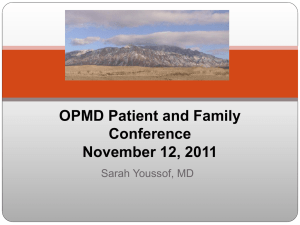
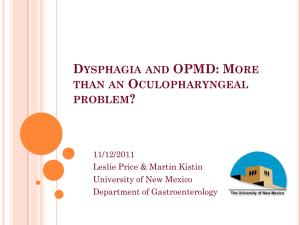

![Dysphagia Webinar, May, 2013[2]](http://s2.studylib.net/store/data/005382560_1-ff5244e89815170fde8b3f907df8b381-300x300.png)


